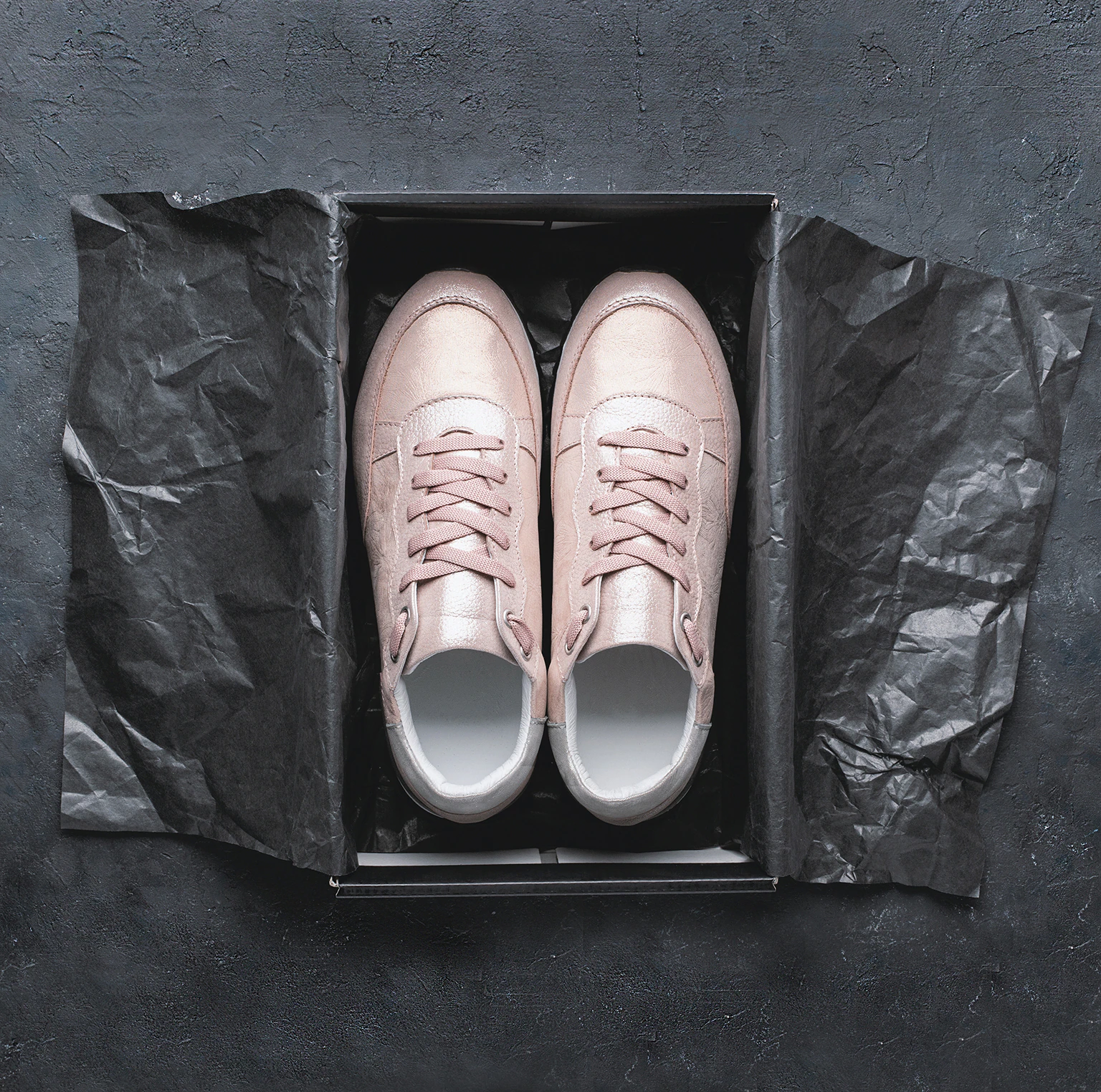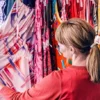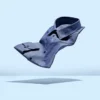You can contact us 24/7 447771208062
In this episode of The McKinsey Podcast, Anita Balchandani and Achim Berg talk about the challenges and trends shaping the next wave of fashion. An edited transcript of their conversation follows.
Diane Brady: Hello, and welcome to The McKinsey Podcast. I’m Diane Brady. What a year for fashion it has been. In this show, we’re going to talk about it with two people who know it like few others. Anita Balchandani is a partner in the London office who leads our work in apparel, fashion, and luxury in the UK, Europe, the Middle East, and Africa.
Achim Berg is a senior partner in Frankfurt and global leader of McKinsey’s Apparel, Fashion & Luxury service line. Together, they co-led The State of Fashion 2021 report, which McKinsey publishes jointly with The Business of Fashion. Anita and Achim, welcome.
Achim, let’s start with you. What is the state of fashion?
Achim Berg: It’s a challenged state. We’ve seen a year like no other. It’s going to be the worst year for the fashion and luxury industry since collecting any figures. On development, it’s unprecedented. It’s not comparable to a financial crisis. It’s probably closer to what people must have seen during the Great Depression. So it’s a really bad year and devastating for the industry.
Diane Brady: Now, Anita, it’s understandable. We’ve been sitting home. In fact, when I told somebody I was doing this podcast, she said, “The state of fashion is sweatpants. I haven’t left my home in seven months.” So is this simply a question of obviously retailers have been closed, and that’s simply impeded sales?
Anita Balchandani: Great question, Diane. It’s clear that athleisure and casual-wear sales have seen a huge acceleration over this pandemic. But let’s not forget, so has digital. While overall industry sales are down—there’s no question about that, especially earlier on in the pandemic when food and health and safety were far more important than fashion on the minds of consumers—what we have seen is a huge acceleration and step change in online channels.
In many countries, as of this year, 40 percent of all sales will be digital. As players have seen stores reopen, digital channels continue to grow. So we think that has been one of the silver linings and one of the areas of opportunity that the industry has been able to play with and work with over this last year.
Achim Berg: We’ve also seen a casualization underway.
Diane Brady: Casualization? That’s a great term. What does that mean?
Achim Berg: It means dresses have become much more casual. But that is not an invention of COVID-19. It’s a trend we’ve seen for a long while: moving away from more formal wear, having casual Fridays not only on Fridays but also from Monday to Thursday. Of course, working from home without the restrictions that you typically have in an office has an impact on how you dress.
On the other hand, we should not forget that we’re lacking many occasions for which people dress up. Weddings have been canceled and postponed. Concerts have been canceled. A lot of culture and people-gathering had to be canceled due to the pandemic. All of that has an impact on how we dress, what we shop for, and how we shop for it.
Diane Brady: So when I look at the reports from previous years, Anita, you do talk a lot about the disruption in the industry. Has this accelerated the trends that you were already watching?
Anita Balchandani: What we’ve seen through COVID-19 is indeed an acceleration of a lot of the trends that were already underway. Whether you look at digital, sustainability, or even athleisure and casualization, these were all trends that we were seeing before the crisis. If anything, they’ve been amplified over the course of the crisis.
There definitely have been a few things that you could pin specifically on the crisis. One is clearly international travel, which has driven segments like luxury and travel retail and has clearly stalled. That was probably one of the areas where we saw a stalling or reversal of a trend. But in everything else that we look at, COVID-19 has accelerated many of the trends that we’ve seen.
How the crisis has affected the state of fashion
Diane Brady: Achim, what kinds of players have really proven to be most resilient in this situation, or even most vulnerable?
Achim Berg: Let’s start with the winners of this. It’s actually the winners we had identified before, and, at least to a very large extent, the industry is a winner-takes-all industry. The top 20 percent of the industry was already responsible for the lion’s share of value creation.
Our past analysis also showed that only 45 percent of the companies really generate an economic profit, which means they not only earn their cost of capital but also really create some margin at the end. That got accelerated through COVID-19.
To a very large extent, the industry is a winner-takes-all industry. The top 20 percent of the industry was already responsible for the lion’s share of value creation.
Achim Berg
By now, only 27 percent are expected to be value creators. If you ask which companies are those, you could say to a certain extent they’re the typical suspects: very strong brands with a strong balance sheet that were already in a better position when this crisis hit.
They were more digital. They were more international, with a stronger exposure to China. They were also able to invest in sustainability and in really close relationships with consumers through modern technology, through social media, and through all the innovations that we’ve seen in the industry.
Diane Brady: Anita, I’m contemplating this 73 percent of companies being value-destroying if the 27 percent are value-creating. When I look at that particular trend, is part of the issue during this crisis brand loyalty? Certainly we’ve seen at the retail level, consumers have been less loyal to the brands we put on our shelves. Is that similar to the clothes we now put on our bodies?
Anita Balchandani: Absolutely. The trend of a greater share of the industry now being in value-destruction territory is clearly accelerated from the run rate we were seeing prior to COVID-19. We would put this down to a number of different factors. Let’s not forget at the start of the crisis, fashion was not a top priority for consumers. People were busy with food, with health, and with a number of other priorities.
This pandemic has forced a demand rethink, certainly in the earlier part of the crisis. The second factor that’s playing out here is what we wear. The product mix of that has been dramatically different, owing to the fact that we’re all now spending much more time at home. All of that has caused a real demand shock in the system.
You’ve had the second factor here, which is a lot of the channels that a number of brands would rely on—for example, wholesale channels, independent retailers, et cetera—have actually been at the sharp end of and seen the pain from the crisis. And finally, you’ve had a huge pivot to digital.
If you were a player that wasn’t fully able to capitalize on that, then we’ve typically seen a deflection; brands and consumers absolutely have shown to us during the crisis that they’re open for change. They’re open to trying new brands.
We have seen loyalty being questioned in a way. We’ve also seen greater propensity to try new brands, and particularly channels online. Those have typically been the players that to some extent have also been, relatively speaking, more resilient.
‘Zombie brands’
Diane Brady: Achim, that propensity to change seems to be an opportunity, does it not? What are you telling people? Let’s say I’m a retailer. I’m a fashion brand that’s on the losing side of the equation at the moment. What can I do?
Achim Berg: The first good news is it’s fashion. If you really understand the trends, if you make your product relevant just from a product point of view, you can still play. So it’s art and science. And the art part will always be strong in this industry.
On the science part, it’s difficult. If you’ve missed the train on digital, if you are undercapitalized and lack now the budgets to invest in the future, and if you have to deal with a lot of the legacy of what used to be retail dominated, of course there are a lot of challenges. We will see a massive consolidation. But it also means that this consolidation will give some room to breathe and will provide some market-share opportunities for those that get through this and will likely be embarking from this crisis in a stronger fashion.
Diane Brady: So consolidation, meaning the brands become part of a larger conglomerate? Or that the brands disappear?
Achim Berg: We’ve seen after the financial crisis a lot of what we call zombie brands, brands that were still around but that were undercapitalized, were also not really in fashion with the consumers but were still somehow alive and managing to get from one year to the other. In that respect, 2020 will make a difference. And 2021 will also prove to be different.
Casual wear, sustainability, and other trends
Diane Brady: So Anita, we’d be remiss in talking about fashion if we didn’t talk about the trends. Both of you certainly weigh in here. But did anything strike you this year, or anything looking ahead, that you see as more of the motif of our tastes?
Anita Balchandani: The one thing that we’ve seen is the trend around casualization, but we could well imagine that there is a revival toward glamour as we start to come out of this. We’re already seeing that the need for self-expression doesn’t go away because we have just been through a pandemic.
So to some extent, we think the demand for product that is more special, more glamorous, et cetera, will make a comeback. We anticipate—and you’ll see in the report—that nearly 90 percent of industry executives feel that the working model of the future will be hybrid. People are typically going to be working from home two to three days and the rest in the office.
We might see some fluctuating behavior, which is really sort of dressing up and looking your best on the days that you are out and being much more casual and cocooned when you’re in the home. However, what we are also likely to see is that the new variant of glamour will also come with a degree of comfort.
People have realized that clothing that’s comfortable, that falls well, that feels good, that is well made has become much more important, given the lives that we’ve been leading. So that probably is something that will continue.
People have realized that clothing that’s comfortable, that falls well, that feels good, that is well made has become much more important, given the lives that we’ve been leading.
Anita Balchandani
Diane Brady: Goodbye, four-inch heels. I can’t say I’ll miss them.
So, Achim, there certainly seems to be more discussion of sustainability. Is that a trend that’s going to transform the priorities in fashion?
Achim Berg: We’ve seen that transformation underway for a while. In last year’s report, we said, “Sustainability will be the big topic in 2020.” Despite the fact that obviously the coronavirus crisis was the big topic, sustainability still stayed hugely relevant.
We’ve also published a report called Fashion on Climate together with our partners from the Global Fashion Agenda that looks into the CO₂ footprint of the fashion industry on the planet and what it takes in order to reach the Paris Agreement targets. And that is massive. The industry needs to do a lot to bring the emissions down by a minimum of 50 percent.
The question is, how is COVID-19 impacting that? The jury is still out. Market research makes us believe that people have become more conscious. They had time to think about it. They had time to look into their wardrobes. They had time to realize that they need far less fashion if they don’t have the occasions to wear it.
I think that a jogging pant can get you a long way these days. But we will see. If the Roaring Twenties are back and if we are all going to celebrate that the pandemic has vanished, we might go back to buying more. And then we hopefully buy more with sustainability in mind.
Diane Brady: Anita, I’ve seen some strange bedfellows, luxury brands partnering up with what essentially are resale sites, big brands buying streetwear brands. What’s going on?
Anita Balchandani: This day of reckoning for fashion is probably broader than just about sustainability. It’s a whole revisit of how the fashion industry works and to reimagine it in a way that’s future-proof.
Some of those examples are really a recognition that whether it’s pre-owned, whether it’s resale, whether it’s casualization, these are trends that are here to stay for the consumer of tomorrow. If you’re a luxury brand that’s going to remain relevant in the next decade, then some of these opportunities present tailwinds that you should be accelerating toward as well.
This moment—and certainly the last nine months—has really shown us that there are almost no sacred cows in a way. Fashion businesses are taking stock of how they can reshape their futures on a number of different dimensions.
Achim Berg: It’s also a great example to see how the one and the others can be connected. Because one of the key issues for the fashion industry when it comes to sustainability is that the garments are not worn as long as they should be worn.
The fact that a secondary market really got a boost through digital innovation—because it’s now a digital exercise, and it’s somehow lost its stigma with the younger consumers, and even became trendy—is a nice way to see how technical innovation, a new consumer group, and sustainability come together and create a whole new market and a better footprint for the industry.
Launching a brand in today’s market
Diane Brady: What are the conditions right now for young designers who are starting out? Is it more difficult, or in some ways do they have a wider script to find a market, frankly?
Achim Berg: On the one hand, we see a consolidation of brands. So you could think that the opportunities for young designers will become fewer. On the other side, the digitization of the whole industry, the fact that you can basically start your own brand, bring it to a broader audience than your local environment—through digital platforms, through direct-to-consumer, through social media—also provides opportunities. I’m not concerned that we’re going to have a lack of creativity, of new designers. That’s what the whole industry lives off of. And everybody in this industry is well advised to nurture that.
Anita Balchandani: I’d also say that it really depends on the life stage of the brand. We actually believe it’s easier today to start a brand and to launch something if you’re a designer because you have a lot of digital innovation to be able to access a global consumer. You’ve got access to crowdfunding and sources of capital, all of which we believe are easier today than they might have been historically.
However, when it comes to scaling up a brand—when designers need to scale, for example—I think that’s where we probably start to see that [consolidation]. And if you look at the beauty industry as an analog, a lot of the disruptive start-ups were really able to gain momentum, but ultimately actually have found themselves and their homes to be within a larger business, to really help them with what it takes to scale up the business in a global way. So the opportunities for designers and what that looks like may vary by life cycle on the start-up phase versus the scale-up phase.
Diane Brady: The spiritual center of fashion traditionally is certainly Europe and to a large extent North America. You are in Europe, the Middle East, Africa. Anita, let me start with you. In terms of the global perspective, both consumption trends and the innovation that we’re seeing, is there still this pivot toward European brands? Or are you seeing shifts there?
Anita Balchandani: It’s a great question. If we start to think about how brands are discovered today and what drives consumers to shop them, then I think we’re living in a world that is increasingly global, increasingly interconnected. It makes it much easier for consumers around the world to find that designer or that label from Paris versus America.
Let’s not forget that a lot of the online platforms are also making it possible for brands from Asia, or indeed even manufacturers from Asia, to be able to connect with consumers around the world. So to that extent, the flavor overall is getting much more global because of the way brands are discovered and the role that digital channels have to play in that.
But equally, this also is starting to show the hallmarks of a winner-takes-all market where the big brands have proven that they are more resilient. In many ways, consumers have gravitated toward these bigger brands that have a clearer value proposition and a clearer positioning in consumers’ minds. Then you could argue that some of the bigger brands are really setting the scene for consumer demand around the world.
The changing luxury market
Diane Brady: That’s a great point. Achim, you’d mentioned Asia. Certainly from an economic point of view, we can understand how that’s becoming a bigger force. From a distribution point of view and some of the online platforms and such, that also seems to be a factor. Why is Asia so important in fashion right now?
Achim Berg: You’re absolutely right. Asia is very important. And let’s name it. It’s mainly China that is driving the increase in demand. You have highly developed, big, and relevant markets like Japan and South Korea. But if you look at growth rates in recent years, and also in this year, China is probably the only country with a positive GDP growth.
That has a massive impact on the industry. We were already writing two years ago that the center of gravity is moving back to the East. That’s exactly what we saw in 2020. The whole industry has seen how dependent we are on the Chinese market.
It started at the beginning of last year when a lot of the more midmarket brands were concerned about their growth because of the outbreak of COVID-19. We’ve seen a much harder lesson for the luxury industry afterward. A lot of the luxury industry in Europe, also in North America, was and currently still is dependent on the international traveler from China, to a lesser extent also from the Middle East and from India.
Now that this consumer is unable to make it into Europe and North America, that consumption goes away. It is repatriated in a way in China. People have really started to consume luxury domestically in China, even if prices are 20 to 30 percent higher than in Europe.
It also shows the complete lack of sales we’ve seen in Europe, which now funnily leads the luxury brands to go back to the local customers. Given that we don’t expect travelers to come back until, let’s say, later this year or early ’22, and that things only normalize in three to five years, there will be a lot of focus on local and regional customers in Europe and in North America in the next couple of years.
Reimagining the role of stores
Diane Brady: Anita, what about the store experience, since that’s so critical to fashion? Is it dead?
Anita Balchandani: Look, we’ve all seen the acceleration in digital channels. There’s no question that the role of stores and the scale of a portfolio that is appropriate for a brand or retailer to have is going to be called into question. Many will be reviewing their store portfolios and indeed their rental cost space.
Having said that, we believe there’s going to be a reimagined role of the store as well that will emerge from all this. Particularly, we’ve been quite excited to see some of the innovation that finally makes the merging of online and offline channels a reality.
For example, we’ve seen players draw on customers who are on a website, able to connect with colleagues in store for customer service. We’ve seen in many cases store colleagues starting to pick and pack and get customer orders ready to ship.
We’ve actually seen for the first time probably much greater integration and ability of both store colleagues and physical locations to also power the digital experience. That’s going to be an exciting area of innovation for the future.
Diane Brady: So much of fashion is tactile but also event-driven. Here in New York, Fashion Week is an event that extends far beyond the world of fashion. I want to ask a more personal question, Anita, about your own habits and how they’ve changed and what you miss. You must have spent a lot of time on the road prior to this.
Anita Balchandani: Indeed. I always like to look at the positives that have come out of this, and clearly some of the other things that we miss and crave in a way. The fact that this has brought about just a much more thoughtful reflection on where it makes sense to travel versus actually, what are things that can be done well virtually?
What we’ve been doing over the last year is quite frankly out of force because we’ve had lockdowns and various measures. But we’ll come out of it and find a balance, which allows us to spend more time making sure we get home in the evening or that we have a certain proportion of the week when we can base ourselves from home, but also which brings us back to some of those conversations and connections that are really important to innovate, excite, and work much more collaboratively with teams and with clients.
My rule of thumb or conclusion is that we’ve all found we can be extremely productive even in a virtual world. But it’s very difficult to also be able to do some of the things that call for greater innovation, inspiration, connection, relationship building in a purely virtual world. I’m hoping that we will come out of this into a much more blended sort of form that is the best of both worlds.
We’ve all found we can be extremely productive even in a virtual world. But it’s very difficult to also be able to do some of the things that call for greater innovation, inspiration, connection, relationship building in a purely virtual world.
Anita Balchandani
Changing role of fashion shows
Diane Brady: Achim, these kind of industry-gathering events, are they going to be less important in the physical world since we can kind of do them virtually?
Achim Berg: We’ve already seen that the role of the fashion shows has become less important than it used to be. In the old day, it was basically two times a year in each of those fashion cities to inspire, to produce some news, to produce pictures and stories for the media, and for the brands to communicate about the innovations and the new collections.
In the world of social media, two times a year multiplied by four or five cities is just not enough. We’ve seen that more storytelling was required. More occasions were required. And fashion shows, in a way, have only become one of many moments to create these stories.
But I think the industry needs to get together. It needs to exchange the same way as we need to exchange with our clients. A lot of ideas, a lot of opportunities are created through those kind of unplanned gatherings and discussions that we all have under those circumstances.
Using videoconference and telephone is efficient but also much more transactional. So I can’t wait to be back at the fashion shows. I can’t wait to be really back in the boardrooms of my clients. And hopefully, at least the second half of this year will get us there.
Anita Balchandani: The only thing I would add is that the bar on what would get us out of bed, I think, has risen, right? So we will absolutely take the time to [get ready] for important moments and special occasions.
But we will also start to question some of the other meetings and conversations that one might look back at and say were probably not that essential or didn’t quite require making that effort into traveling to.
Diane Brady: This push for social justice—whether it’s Black Lives Matter or just this understanding of embracing diversity—I’m curious around the extent to which this is influencing your end of the business because fashion is as much a political statement as it is a personal style statement. Are you seeing that starting to influence conversations in any respect?
Achim Berg: It already has massively. Fashion is a mirror of culture, a mirror of what’s going on in the world. It’s also an expression of yourself and what you believe and what you want to make others see. So there’s always a translation of that into fashion and into style.
We also clearly see that social media and consumers are much more sensitive to those topics and want to see that reflected in the way brands act and present themselves. Sustainability, social justice, equality, all of those topics are highly relevant.
What it will take for brands to recover
Diane Brady: We’re still in the middle of tough times right now. Anita, what advice do you give to people in the industry or even to individuals listening to this?
Anita Balchandani: It would be best summarized as, we’re certainly looking forward at a recovery trajectory. However, let’s not forget that the recovery isn’t going to be complete even this year, right? So we will continue to live with the virus and its consequences.
The key takeaway, if we think about the characteristics and traits of those who have been, relatively speaking, more resilient through this period, is first, it will call for speed and responsiveness, really staying tuned to where the consumer is heading, what matters, and how quickly players can respond and pivot around that.
Second, it’s really going to be about focus. Brands and players and individuals won’t win by spreading their efforts and attention everywhere. It will call for a particular focus on the channels and the markets and geographies that are going to drive this recovery. You have to be where the recovery is to ensure that you can stay ahead and win as part of this recovery.
And finally, it’s important to note that this recovery is going to come with a market-share redistribution. So the recovering tide is not going to lift every player. It’s going to lift the players that are better positioned and will end up gaining and distributing market share in their favor. So really thinking about what it is that it would take for you to be a winner in market-share terms as we come out of the recovery, that’s going to be an essential lens for companies to adopt.
Diane Brady: Great. Achim?
Achim Berg: Despite the fact that it’s all tough to live through this crisis, it’s also an amazing opportunity for this industry. And it was somehow overdue, yes? Because we all learned somewhat the hard way that this industry can innovate.
Think about how product has been developed in the last couple of months: very often from a kitchen table, much more digitized; using tools, not being with your factory; selling online, not in stores; building up new capabilities; being much more agile and flexible than we used to be.
We should make sure that a lot of those workarounds and new techniques become a new standard and a new reality. That will help to innovate the industry. We will always need fashion. So I’m not concerned about that. If the industry gets its act together, it will also continue to be successful in the future.
Diane Brady: Definitely. I’m looking forward to the day when I can wear something a little different from my athleisure. Anita Balchandani, Achim Berg, thank you very much for joining us.
Achim Berg: Thanks, Diane, for having us.
Anita Balchandani: It’s been a real pleasure, Diane. Thank you.
Diane Brady: Thank you to those of you who have been listening. If you’d like to find out more information, please go to McKinsey.com. You will find The State of Fashion 2021 report there and also much, much more. Until next time, I’m Diane Brady.





